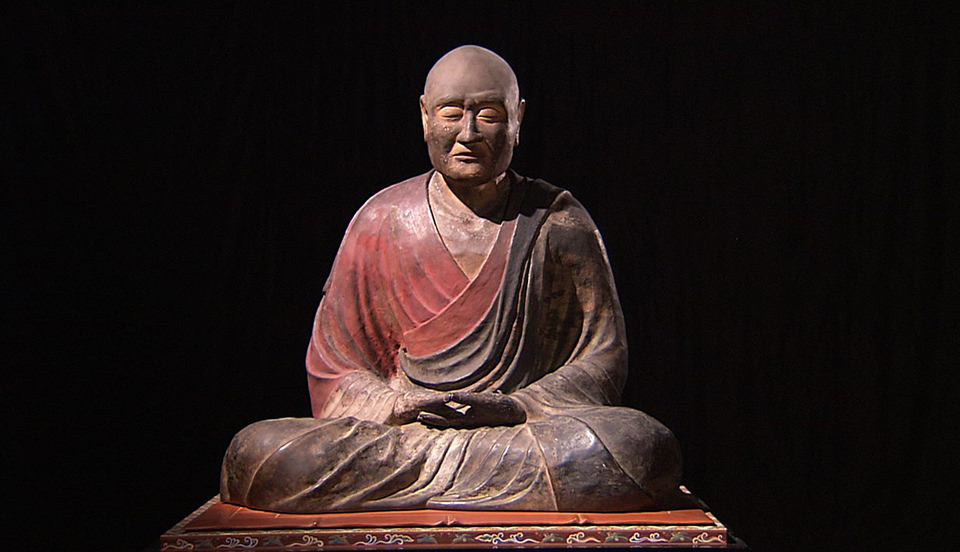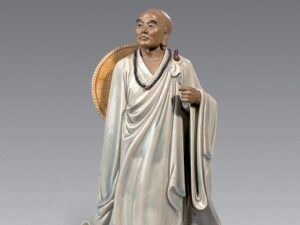THE HISTORY
FOREIGN VISITORS
GANJIN
Chinese monk impressed by Yakushima's abundance of natural remedies
Records taken at the end of the 12th century neglect to mention Yakushima, but they do include much of the neighbouring island of Tanegashima (種子島). Tanegashima was (and still is) a far more agriculturally productive island and so it is assumed that there was not much interest in Yakushima during this period due to its lack of productivity. The Kamakura Period was also when the ruling clan – the Shimazu family – took control of southern Kyushu and islands further south for the next 800 years. The Shimazu clan were an extremely powerful and influential family throughout Japanese history, but particularly leading up to the Meiji Restoration.

Ganjin and Yakushima
Ganjin (Jianzhen 鑒真 as he was known in Chinese) was a Chinese monk born in present day Yangzhou, Jiangsu during the Tang Dynasty in 688. Ganjin was a major early figure in the establishment of Buddhism in Japan. He entered the Buddhist Da Ming Temple (大明寺) at the age of fourteen and studied in Chang’an from the age of twenty.
In 742, a Japanese emissary invited Ganjin to lecture in Japan and between 743 to 754, Ganjin attempted to visit Japan on six occasions. Despite protests from his disciples, Ganjin made preparations and in the spring of 743, he was ready for the long and treacherous voyage across the East China Sea to Japan. The crossing failed! And the following four attempts also failed – due to bad sea conditions and government intervention. During one attempt he contracted a disease that left him blind.
 In the autumn of 753, the blind Ganjin decided to join a Japanese emissary ship returning to its home country. This voyage was also not without its dangers and after several months at sea or stopping by various locations along the Ryuku Islands, the group finally landed at Kagoshima on December 20th, 753.
In the autumn of 753, the blind Ganjin decided to join a Japanese emissary ship returning to its home country. This voyage was also not without its dangers and after several months at sea or stopping by various locations along the Ryuku Islands, the group finally landed at Kagoshima on December 20th, 753.
It was during December 753 that Ganjin came upon the shores of Yakushima. He had no plan to set foot upon the island, but once again bad weather caused the crew to place the ship into the safety of an inlet until the conditions improved.
Ganjin was well-versed in medicine. He is acknowledged as having established a hospital within the Da Ming Temple. His medical specialty was in the use of leeches and he was known to have cured numerous illnesses that had baffled the Japanese medics up to that point in time. Although his time on Yakushima was very short, he did stress two points regarding the island. The first was that he found the locals uncivilized (coming from Tang Dynasty China then he could have said this about anywhere at the time!). The second point was that he recognized Yakushima as being a great haven of natural remedies and in this matter he was certainly correct! His legacy upon the island was that he gave Yakushima one of its very first Chinese character readings.
Travelling from Kagoshima to Nara took a few months and Ganjin arrived at the Imperial City in 754. He was welcomed to Nara by the Emperor who was to become one of his students of Buddhism. Once in Nara, Ganjin set about presiding over the establishment of the Todai Temple (東大寺) which had begun construction in 728. Ganjin and his disciples are credited with introducing the distinctive Chinese architectural design with greatly influenced Japanese architecture thereafter. The current Todai Temple in Nara is not the original as the Todai Temple has burned down on two occasions – in 1180 and again in 1567.
Along with his introduction of Buddhism, Ganjin and his disciples were important figures in introducing Chinese culture into Japan, the Chinese script and calligraphy, tofu (bean-curd) manufacturing and brewing alcohol.
In 759, Ganjin was granted land in western Nara and established a school and a private temple named the Toshodai Temple (唐招提寺).
Ganjin died in 763. He is revered in both China and Japan.


